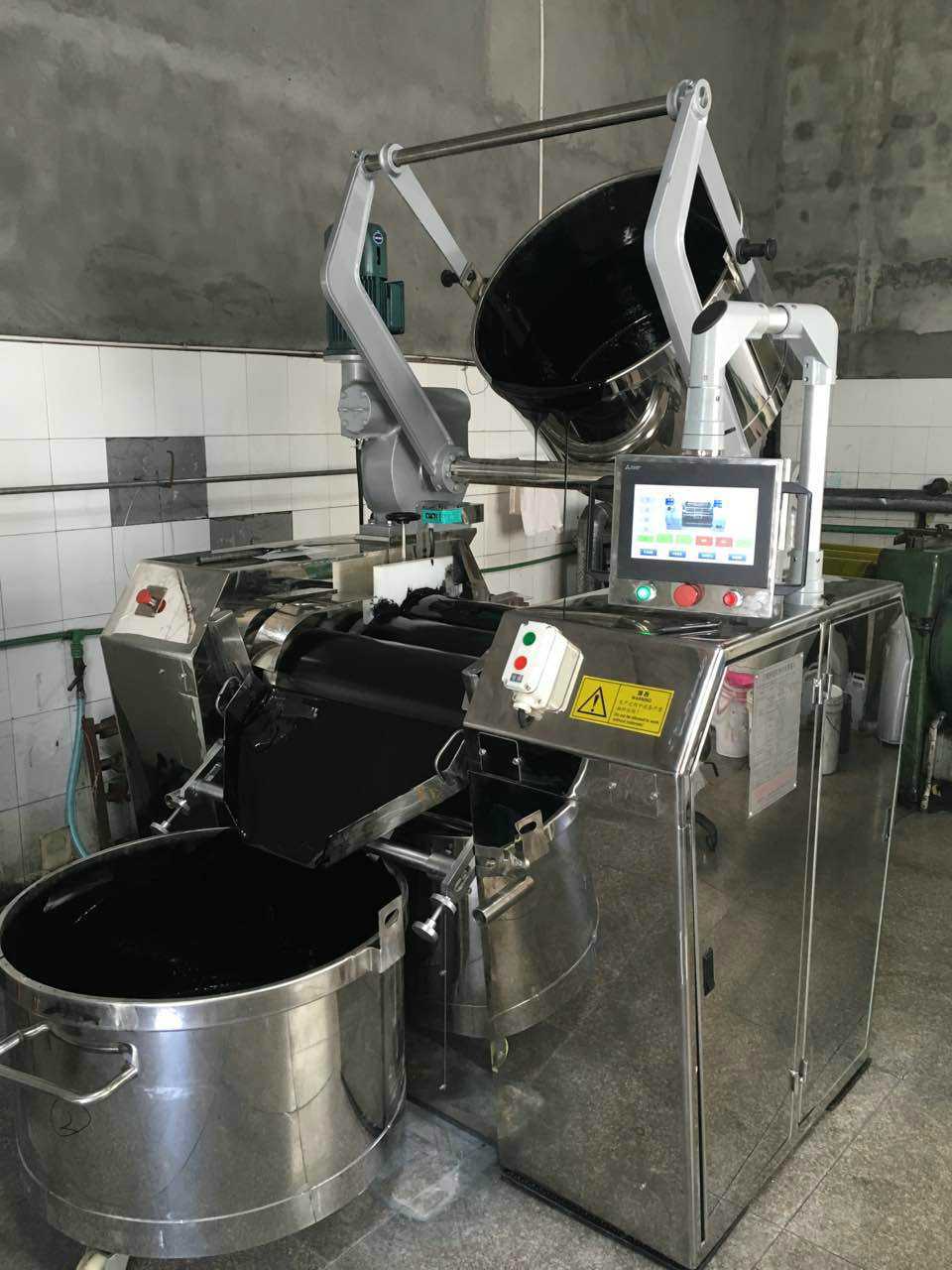Ink manufacturing process can be described as a mixing process. Pigments, binder and additives are usually separately synthesized beforehand. An important task in this process is pigment dispersion. To break up pigment agglomerates, three roll mill, ball mill, and other type of mills might be employed. Three roll mill provides the highest shear force. It's commonly used in the production of screen-printing inks, pad printing inks, UV inks, glass inks, and other variety of inks.
Three roll mill is especially effective for pigment dispersion in high viscosity paste for heavy offset-litho base inks. It will be difficult to mill a liquid ink on a three roll mill, since the solvent tends to evaporate. Ball mills, instead, have been used to mill liquid inks. However, good dispersion through ball milling could only be obtained at proper viscosity (between 1600 to 2400 cps).
The primary purpose of the dispersion process is to break down pigment aggregates and agglomerates to their optimum pigment particulate size and distributes these pigment particles evenly throughout the similar medium i.e. the carrier.
Once the varnish (containing the solvent, resin and additives) has been produced the pigment is mixed into it. At this point the pigment particles clump together. These clumps must be broken up and the pigment dispersed evenly through the resin by three roll mills.
Carbon properties influence ink performance. For example, the smaller particle size increases blackness, tint, UV protection and absorption, electrical conductivity. The higher structure could reduce blackness and tint, improve dispersibility, increases vehicle demand and viscosity, and increases electrical conductivity. The higher porosity could increases vehicle demand and viscosity and electrical conductivity and reduce loadings in conductive applications. High surface activity will improve vehicle wetting, reduce viscosity of liquid system and lower electrical conductivity.
Carbon black dispersion include the follow steps: incorporating the carbon black in the vehicle system, dispersion the air entrained in the carbon black with the vehicle (wetting the pigment), and reducing carbon black agglomerates or aggregates through grinding. Good interaction between the vehicle and carbon black will facilitate wetting and accelerate the dispersion process. In other words, better carbon black/resin interaction means better ink stability. The proper choice of effective wetting and dispersing agents can provide vast improvements in ink performance. In the ink industry, the dispersion is usually characterized by Hegman gages.
And as mentioned before, the type of equipment used to disperse carbon black depends on the viscosity of the ink. Ink makers generally use three roll mills to handle high viscosity paste ink formulas at relatively low temperatures.
UV curing inks have become one of the fastest growing segments in the graphic industry. UV inks are employed in offset printing and flexo printing as well as in screen printing.
Major benefits offered by UV technology are faster run speeds resulting in improved productivity, quick start-up resulting in less waste, quick turnaround and converting due to instant curing of the ink film, environmentally safe technology without the use of VOCs, and higher print quality (i.e. gloss).
Three roll mills were used for UV inks because bead mills created an uncontrolled thermal reaction which could lead to polymerization.

View More(Total0)Comment Lists